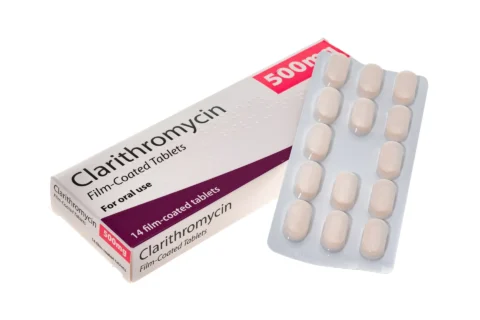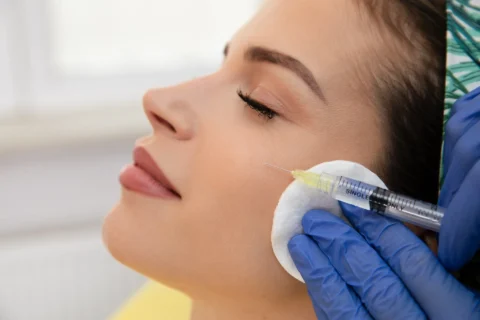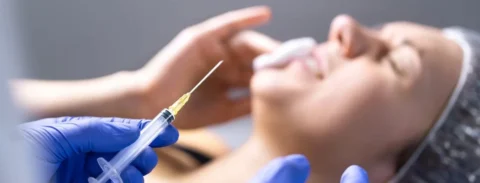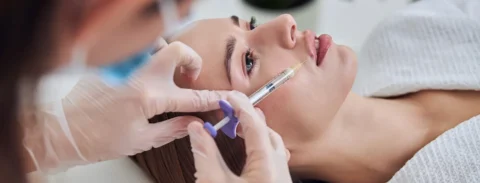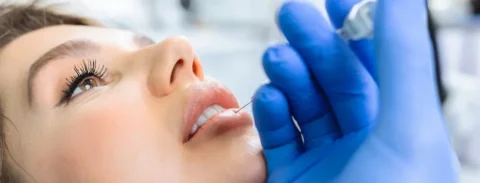For information only. Not meant as advice in any form. Please consult your medical professional.
Lumps are not a particularly uncommon side effect of injectable cosmetic fillers. Since the treatment is intended to add volume, the injection of the filler material will result in mild swelling and a feeling of fullness which typically resolves within a few days. However, there are also rare cases where a delayed onset nodule or foreign body granuloma will develop and this will likely need antibiotic medications as a first-line remedy.
So how can doxycycline help with inflammatory nodules from dermal fillers? Doxycycline is an antibiotic that’s commonly used to treat bacterial infections and skin conditions like rosacea. If a nodule is seen to be caused by a bacterial infection upon diagnosis, this medication can help stop the infectious process and reduce inflammatory reactions. Most studies recommend that doxycycline be taken for at least 2 weeks to achieve desired symptom improvement.
Can You Prescribe Doxycycline to Treat Delayed Inflammatory Reactions After Dermal Fillers?
Injectable cosmetic fillers are one of the top performed procedures today for good reasons—they’re a minimally invasive, low-risk, and effective option to achieve facial rejuvenation without plastic surgery. However, it’s not uncommon to experience some side effects before a patient can fully enjoy the results of their treatment.
A delayed inflammatory reaction is a possible complication of fillers that may arise from poor injection technique, insufficient skin preparation, depth of placement, amount of volume, and composition of the soft tissue injectable. Unlike normal lumps that are visible immediately after the treatment, most inflammatory nodules appear within several months from the injections.
The treatment of a granulomatous reaction may vary depending on the degree and cause of the inflammation. Typically, oral antibiotics are given as a first-line treatment if there’s visible swelling, tenderness, redness, skin thickening or induration, and warmth in the affected area. Doxycycline is among the possible medications that may be prescribed to patients with nodules.
What You Need to Know About Doxycycline As A Medication
Oral doxycycline belongs to a class of antibiotic medications that are used to treat a wide variety of infections caused by different organisms. It’s synthetically derived from oxytetracycline and helps stop the growth and spread of bacteria by binding to a specific ribosomal subunit, preventing bacterial protein synthesis.
This medication also has potent anti-inflammatory actions due to its ability to inhibit the proliferation of cytokines and chemokines during inflammation. Doxycycline can be taken as a capsule, tablet, delayed-release tablet, and suspension liquid by mouth. They’re usually taken at least twice a day for treating most conditions.
Common Conditions That It Can Treat
The prescribed dosage of doxycycline can vary depending on the symptoms and medical condition that is being treated. Since it’s a broad-spectrum antibiotic, its common applications range from bacterial infections to sexually transmitted diseases and skin disorders. Here’s a list of the diseases that doxycycline can help with:
- Malaria
- Moderate to severe acne
- Urinary tract infections
- Respiratory infections
- Chlamydia
- Gonorrhea
- Syphilis
- Periodontitis or gum disease
- Rheumatoid arthritis
- Rosacea
- Granulomatous disease
- Bullous dermatoses
- Atopic dermatitis
Using Doxycycline for Late Onset Nodules from Dermal Filler Complication
Oral antibiotics can be prescribed as an early treatment for inflammatory nodules caused by an infectious process. To determine if a nodule or granuloma is caused by a bacterial infection, there should be signs of growth of biofilms. A biofilm is produced when microorganisms, such as bacteria, gather and stick to a slimy or wet surface.
They often develop when the filler material becomes contaminated during the administration of the injection. Infection from a biofilm can lead to delayed persistent nodules with redness, edema, induration, and tenderness on the affected site. If any of the symptoms are present with the inflammatory nodules, antibiotic therapy with doxycycline may be recommended to the patient.
Recommended Dosage for Doxycycline
Most patients start with a standard doxycycline dose of 100mg twice a day for at least 2 weeks. If the inflammatory nodules aren’t improving after the first cycle of medications, they can continue taking them for another 2 weeks until the symptoms have resolved.
In some cases, a persistent nodule or granulomatous reaction may also require taking dual antibiotic therapy. Some combination medications that may be recommended are:
- Macrolides, such as 500mg of clarithromycin twice a day
- Tetracyclines, such as 100mg of minocycline or 100mg of doxycycline
- Quinolones, such as 500mg or 750mg of ciprofloxacin for twice a day
Potential Side Effects of Taking Doxycycline
Doxycycline is a strong antibiotic so it should only be taken as prescribed. If the nodules have subsided, a patient can stop taking the medications and proceed with another course of treatment to further improve the affected area. Just like any medicine, taking doxycycline may also cause some side effects:
- Headaches
- Nausea
- Vomiting
- Diarrhea
- Mild skin itching or rashes
- Vaginal itching or discharge
- Increased sensitivity to sunlight
This antibiotic may also cause allergic reactions such as hives, trouble breathing, sore throat, or facial swelling. Adverse events from doxycycline drugs are rare, but if they happen, make sure to advise the patient to seek immediate medical help to get proper treatment. Other side effects to watch out for are stomach pain, chest pain, throat irritation, loss of appetite, irregular heart rate, unusual bleeding or bruising, and low white blood cell counts.
Other Precautions You Need to Remind Patients Taking Doxycycline
Before prescribing doxycycline, it’s important to assess the medical history and current health of the patient. There are some conditions that may not make it possible to take doxycycline such as:
- Having a history of kidney or liver disorders
- Having oesophagitis or inflamed food pipe
- Having myasthenia gravis
- Having autoimmune disorders like lupus
- Being pregnant or currently breastfeeding
You should also check if the patient is taking other medications prior to prescribing doxycycline for inflammatory nodules. This antibiotic may have unwanted reactions if it interacts with other drugs and supplements. Here’s a list of medicines that don’t go well with doxycycline:
- Antacids for indigestion
- Stomach ulcer medications
- Acne medicines such as isotretinoin
- Anticoagulant drugs such as warfarin
- Epilepsy medications such as phenytoin or carbamazepine
- Immunosuppressants like ciclosporin
- Iron supplements
- Certain hormonal contraceptives
How Do You Distinguish Normal Lumps From Delayed Onset Nodules After Fillers?
Palpable lumps are one of the most common side effects of soft tissue fillers. This typically occurs in treatment areas where the skin is particularly thin, such as the lips, nasolabial fold, perioral lines, and tear troughs. This complication often appears as tender, spongy bumps on the skin and they’re usually non-inflammatory.
However, the appearance of a lump can sometimes be mistaken for an inflammatory nodule. To be able to recommend the best aftercare treatment, it’s important to know the differences between the two skin lesions. Here’s an overview of the unique characteristics of post-filler lumps and inflammatory nodules:
| Lumps and bumps | Inflammatory nodules or granulomas | |
| Appearance | Sometimes, lumps are not visible but they’re noticeable by its unique soft and rubbery consistency. | These may have a firm or hard consistency and will often feel tender and warm to the touch. It may also be accompanied by skin redness and pain, or contain pus. |
| Onset | They show immediately within a few days after the dermal filler injection. | Nodules and granulomas typically appear within 4 to 6 months after the treatment. |
| Cause | They’re a common reaction to the injection of a foreign substance into the skin. | It can be caused by a variety of factors such as foreign body reaction, delayed hypersensitivity reaction, or bacterial infection. |
| Outlook | As the filler material settles, the lumps will gradually resolve. It usually takes 1 week for the lumps to subside. | It will require treatment depending on the known cause. Antibiotic therapy is usually the first-line treatment for inflammatory nodules. If it doesn’t get better within 2 to 4 weeks, it may need excision. |
Diagnosing Late Onset Nodules from Soft Tissue Filler Injections
According to a published article, delayed inflammatory nodules and granulomas from dermal fillers have about a 1% rate of incidence in every patient. If the nodules appear small, they’re usually asymptomatic and can resolve over time. However, if granulomatous reactions persist and are accompanied by general discomfort, they’ll need to be properly treated.
The manner of treatment will depend on the degree and cause of the inflammatory reactions. Generally, chronic inflammation and granulomas on the treated site may appear because of the following:
- Delayed hypersensitivity or immune-mediated reaction – Late onset inflammatory nodules may develop as an allergic response to the HA filler or collagen injection. This type of nodule often appears hard and may have surrounding edema, induration, itching, and redness. A study shows that there’s at least a 0.6 to 0.8% incidence of hypersensitivity reactions to a hyaluronic acid dermal filler.
- Bacterial contamination or infectious process – Delayed inflammatory reactions may also be triggered by infections and bacterial contamination during the injection process. A local infection may cause recurring nodules with accompanying symptoms of induration, edema, redness, and potential abscesses.
Factors That May Contribute To Increased Risks of Nodules
There are different factors that influence the formation of granulomatous inflammation and nodules. Here are some of the things that have been identified to affect the development of skin lesions after dermal fillers:
1. Unprepared Treatment Area
Before injecting fillers, it’s important to thoroughly prepare the treatment site. It’s a standard protocol to follow the aseptic technique when cleansing the skin where the fillers will be placed. If a patient is wearing makeup upon arriving for the procedure, make sure to remove them and cleanse the whole face with an antiseptic solution. You should also wear sterile gloves throughout the treatment to avoid infections.
2. Patient’s Medical History
Proper patient selection is also crucial for the safety of dermal filler treatments. During the initial consultation, ask patients about their medical history to determine if they have any conditions that may affect the fillers. Individuals with autoimmune diseases, atopic disorders, or known allergies to the filler materials are more prone to hypersensitivity reactions.
3. Type of Filler Product Used
The choice of injectable filler can also affect the results and side effects of the treatment. The most common material, hyaluronic acid fillers have a relatively low incidence of inflammatory nodules. On the other hand, permanent filler materials, such as collagen, have an average incidence rate of 1.3% to 4.5% for nodule formation. Individual attributes of the fillers should be considered to determine the proper injection technique to avoid complications.
4. Volume of Injections
Injecting too many fillers may also lead to the development of inflammatory nodules. To prevent this, avoid placing excessive volumes at once and instead slowly administer small amounts of fillers during the session. If a patient requires more volume in the treatment area, you can use another syringe until they achieve their desired result.
Other Treatment Options for Inflammatory Nodules from Dermal Fillers
Aside from doxycycline medication, there are other methods that can help manage nodules and granulomas from filler injections. These options may be taken after doing systemic therapy or if the nodules aren’t showing signs of improvement.
- Intralesional Steroids: These are a series of injections that can help reduce the size of the nodules or granulomas. They usually contain triamcinolone acetonide and they work by disrupting the production of collagen, macrophages, and fibroblasts which are responsible for inflammation. An alternative to intralesional injections is prescriptions of oral steroids.
- Hyaluronidase Treatment: Hyaluronidase is a special enzyme that can be injected to quickly dissolve the hyaluronic acid filler. They can be administered for inflammatory nodules caused by infections or for bad filler results due to the migration of the HA injection.
- Surgical Excision and Drainage: If steroid injections, antibiotics, and hyaluronidase aren’t effective for the nodules, the patient needs to have a surgical excision. This treatment option will completely remove the granuloma or nodule, and can even drain the fluid if there’s a presence of the abscess. However, this should only be taken as a result since it’s somewhat invasive and may leave scars on the skin.
Buy High-Quality Tools and Supplies For Dermal Filler Procedures At FACE Med Store
A foreign body granuloma or nodule is a rare but possible delayed adverse effect from dermal fillers. If this happens, oral antibiotics, such as doxycycline, are one of the best early treatments to manage its symptoms and reduce its size. As a provider, you should also practice safety protocols during the procedure to minimize the risks of delayed inflammatory reactions.
FACE Med Store takes pride in being a trusted supplier of high-quality tools and equipment to medical clinics and aesthetic practices around the country. In addition to providing premium medical supplies, we strive to deliver the best customer service and guarantee your satisfaction with our products. Call us today to know more about our offers or inquire about our stocks.
